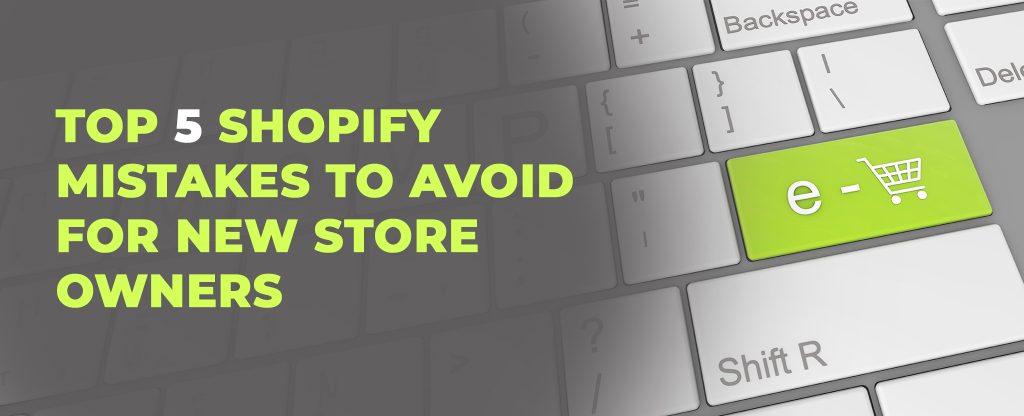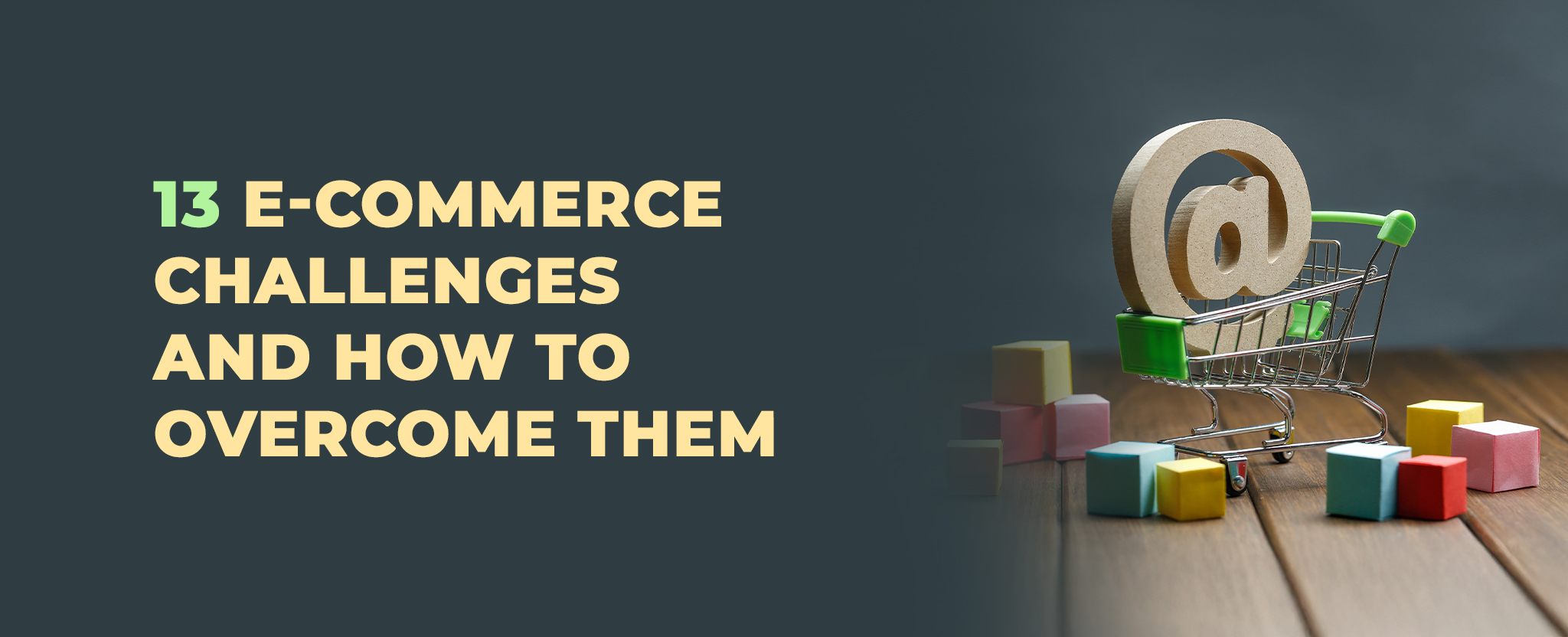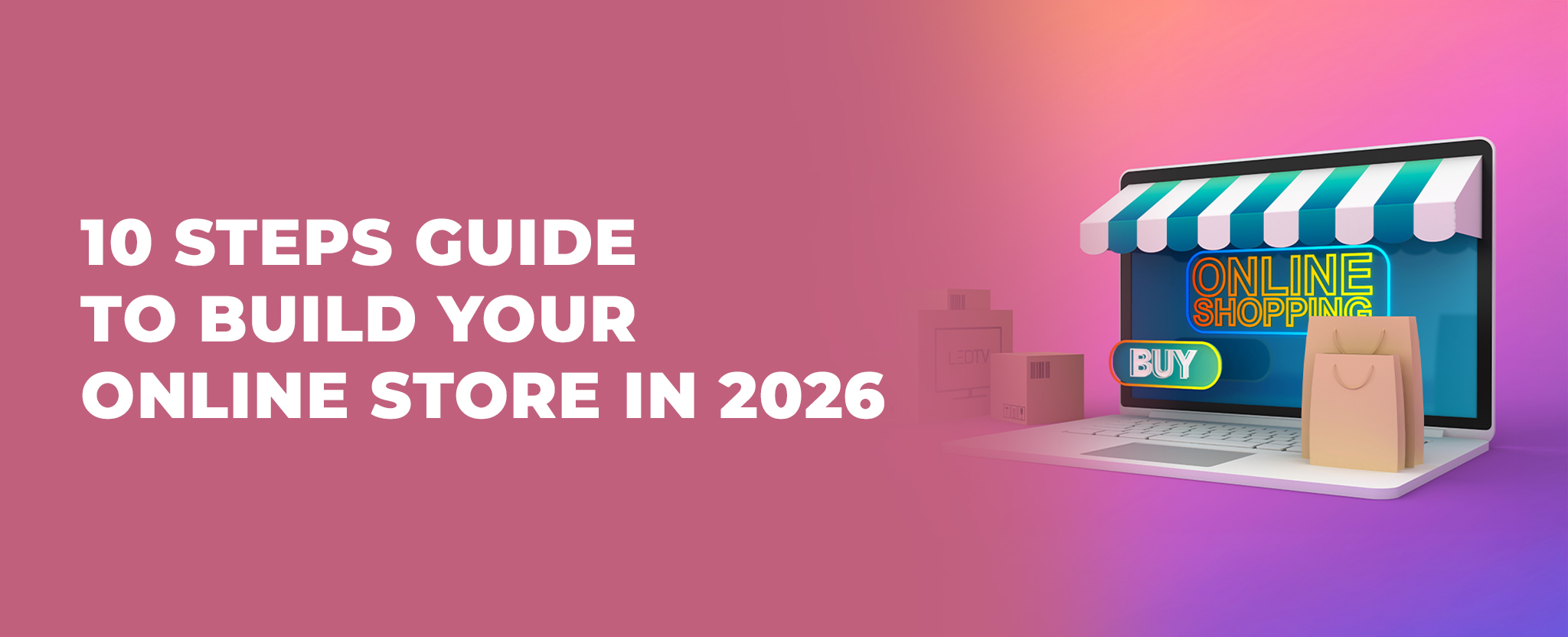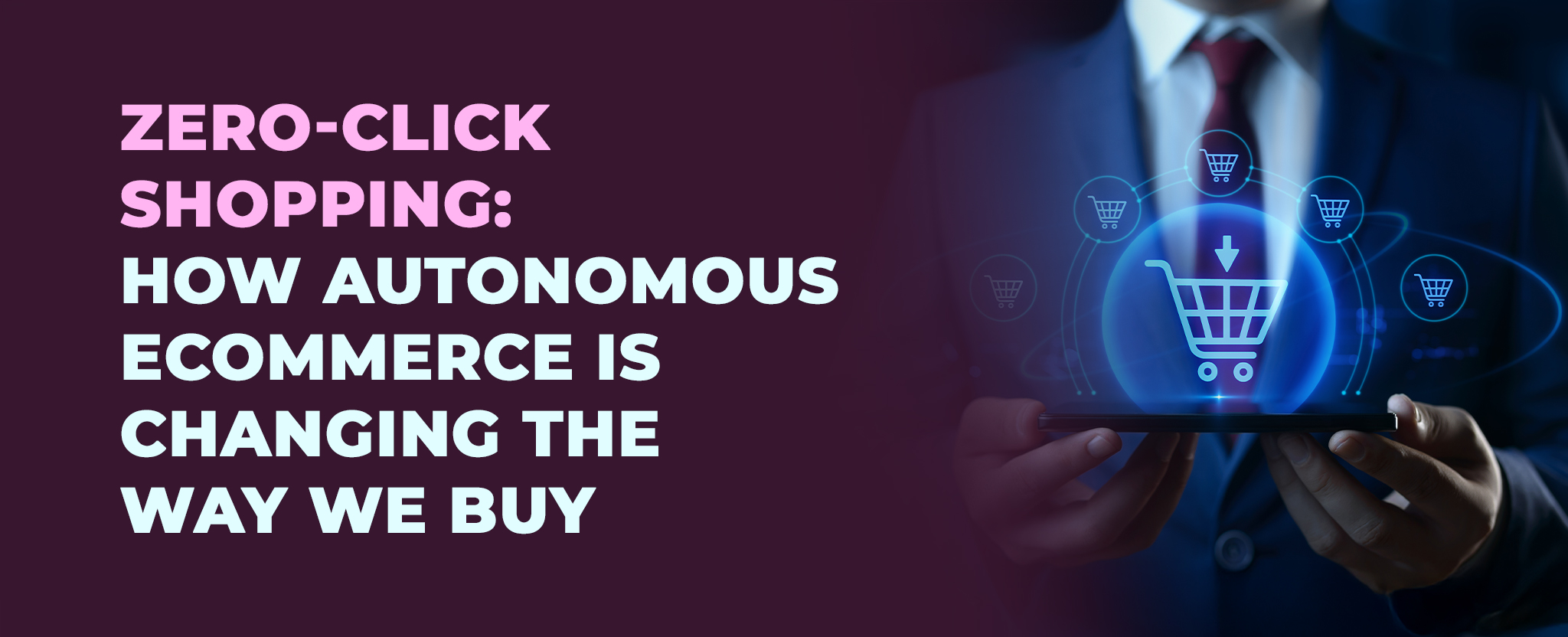Top 5 Shopify Mistakes to Avoid for New Store Owners
30 Jan 25 


Shopify has emerged as one of the leading eCommerce platforms, enabling entrepreneurs to establish online stores with ease. However, while setting up a Shopify store is relatively straightforward, running a successful one requires careful planning and execution. Many new store owners make mistakes that can hinder their growth and sales. To help you navigate this journey successfully, we have identified the five most critical Shopify mistakes you must avoid.
Believing That “If You Build It, They Will Come”
One of the biggest misconceptions among new Shopify store owners is that launching an online store guarantees traffic and sales. Unfortunately, simply having an online presence does not mean customers will automatically find you. The internet is flooded with millions of eCommerce stores, and without a proper marketing strategy, your store may remain invisible.
How to Avoid This Mistake:
- Invest in digital marketing strategies such as SEO, social media marketing, and pay-per-click advertising to drive traffic.
- Optimize product descriptions and images to improve visibility on search engines.
- Leverage content marketing, including blogs and email campaigns, to engage potential customers.
- Consider working with Shopify development experts who can help optimize your store’s visibility and user experience.
- A soft launch can also be an effective way to introduce your store. Instead of going for a grand launch, start by inviting a small group of friends, family, and influencers to test the store and provide feedback. This allows you to identify and fix any issues before opening to a broader audience.
- Test your product choices before investing heavily in inventory. Dropshipping or print-on-demand services can help gauge customer interest without upfront costs.
- Conduct thorough market research to understand customer pain points and desires, ensuring you stock items that will sell consistently.
- Keep an eye on seasonal trends and consumer preferences to adjust your product offerings accordingly and maximize sales.
A soft launch can also be an effective way to introduce your store. Instead of going for a grand launch, start by inviting a small group of friends, family, and influencers to test the store and provide feedback. This allows you to identify and fix any issues before opening to a broader audience.
Not Defining Your Target Audience
Many Shopify store owners make the mistake of trying to sell to everyone, which often leads to wasted marketing efforts and lower conversion rates. Without a clear understanding of who your ideal customers are, you will struggle to create effective marketing campaigns and product offerings.
How to Avoid This Mistake:
- Choose a clean, professional theme that aligns with your brand identity.
- Optimize navigation so users can easily find what they need without frustration.
- Ensure product descriptions are clear, images are high quality, and call-to-action buttons are visible.
- Streamline the checkout process to reduce cart abandonment.
- Improve website speed by compressing images, minimizing unnecessary plugins, and utilizing a content delivery network (CDN).
- Implement trust signals such as customer reviews, security badges, and transparent return policies to increase user confidence.
- Make your site accessible to all users by adding alt text to images, using high-contrast colors for readability, and enabling keyboard navigation
Knowing your audience allows you to focus on the right customers, reducing unnecessary marketing expenses while increasing sales and customer retention.
Ignoring Mobile Optimization
With mobile traffic accounting for more than 80% of online shopping, ignoring mobile optimization can be detrimental to your store’s success. A slow-loading or poorly designed mobile site can drive potential customers away, leading to high bounce rates and lost sales.
How to Avoid This Mistake:
- Invest in SEO by optimizing product pages with relevant keywords, compelling descriptions, and meta tags.
- Utilize paid advertising on platforms like Facebook, Instagram, and Google to generate initial traction.
- Build an email list and engage with customers through newsletters and promotions.
- Leverage content marketing by creating blog posts, product guides, and video tutorials to establish authority in your niche.
- Showcase social proof through user-generated content, testimonials, and case studies to enhance credibility.
- Use retargeting ads with Facebook Pixel or Google remarketing to remind visitors of products they viewed but didn’t purchase.
- Implement email marketing strategies such as abandoned cart emails, personalized recommendations, and exclusive discounts to boost conversions.
Ensuring that your store is mobile-friendly will enhance user engagement and increase conversions.
You may also read How to Move Your Store from WordPress to Shopify Easily
Having a Complicated Checkout Process
Cart abandonment is one of the biggest challenges for Shopify store owners, often caused by a lengthy and complicated checkout process. If customers find it difficult to complete a purchase, they will likely leave without buying, resulting in lost sales.
How to Avoid This Mistake:
- Offer live chat support, clear contact information, and an FAQ section to enhance customer confidence.
- Respond to customer queries promptly and professionally to maintain a positive brand image.
- Consider implementing a chatbot or automated responses for common questions.
- Provide tracking updates and proactive communication about delays or issues to show customers that you value their business.
- Send personalized thank-you emails and follow-up messages to encourage long-term relationships.
- Monitor customer feedback to identify areas for improvement in your store’s operations.
- Establish a clear return and refund policy to reduce friction and increase buyer confidence.
- Offer post-purchase support, such as instructional videos and usage tips, to enhance customer experience and minimize returns.
A smooth and hassle-free checkout experience will encourage customers to complete their purchases and improve your conversion rate.
Not Setting Up Google Analytics for Performance Tracking
Many new Shopify store owners overlook the importance of tracking their store’s performance. Without proper analytics, it is impossible to measure the effectiveness of marketing campaigns, customer behavior, and overall store performance.
How to Avoid This Mistake:
- Ensure your store’s design is responsive, with easy-to-click buttons, fast loading speeds, and smooth navigation.
- Test your website across various screen sizes and browsers to guarantee a seamless shopping experience.
- Optimize images and reduce unnecessary scripts to improve performance.
- Implement mobile-friendly payment options like Apple Pay and Google Pay.
- Use accelerated mobile pages (AMP) and one-click checkout to enhance the shopping experience.
- Track mobile-specific analytics to identify and address issues affecting user engagement.
- Simplify the checkout process by offering guest checkout, autofill options, and multiple payment methods to reduce cart abandonment.
Having a data-driven approach allows you to identify what works and what doesn’t, helping you optimize your store for better results.
Conclusion
Setting up a Shopify store is an exciting journey, but avoiding common mistakes can significantly impact your store’s success. By understanding and rectifying these five key mistakes—failing to market your store, not defining your target audience, ignoring mobile optimization, complicating the checkout process, and neglecting analytics—you can position your Shopify store for long-term growth and profitability.
By implementing the right strategies and continuously optimizing your store, you can build a strong online presence and achieve sustainable success in the competitive eCommerce landscape.
- Agentic AI1
- Android Development3
- Artificial Intelligence31
- Classified App3
- Custom App Development5
- Digital Transformation12
- Doctor Appointment Booking App14
- Dropshipping1
- Ecommerce Apps40
- Education Apps2
- Fintech-Apps37
- Fitness App4
- Flutter4
- Flutter Apps20
- Food Delivery App5
- Grocery App Development1
- Grocery Apps3
- Health Care10
- IoT2
- Loyalty Programs9
- Matrimony Apps1
- Microsoft1
- Mobile App Maintenance2
- Mobile Apps127
- Product Engineering6
- Progressive Web Apps1
- React Native Apps2
- Saas Application2
- Shopify9
- Software Development3
- Taxi Booking Apps7
- Truck Booking App5
- UI UX Design8
- Uncategorized6
- Web App Development1



















Comments